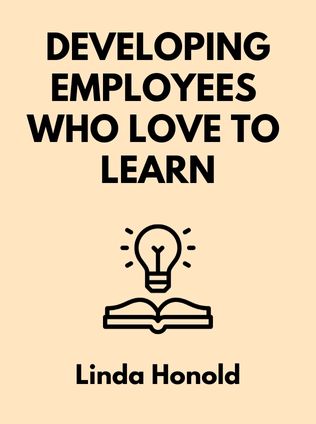
Developing Employees Who Love To Learn
Tools, Strategies and Programs for Promoting Learning at Work
By Linda Honold
Published 12/2001
Developing Employees Who Love to Learn: How to Promote Learning at Work
About the Author
Linda Honold, Ph.D., is a distinguished consultant specializing in employee learning and organizational transformation. As the president and founder of Empowerment Systems, she has dedicated her career to fostering workplace environments where continuous learning and improvement are paramount. Honold's work is grounded in the belief that a learning-oriented workforce is essential for navigating the challenges of modern business landscapes characterized by rapid change and intense competition.
Main Idea
In "Developing Employees Who Love to Learn," Linda Honold emphasizes the critical importance of creating a learning-centric workplace. She posits that the success of any organization in today's fast-paced, information-rich, and highly competitive environment hinges on the ability of its employees to continuously learn and adapt. Honold outlines a comprehensive approach to fostering a culture of learning, detailing the benefits for both organizations and employees, and providing practical tools and strategies to implement effective learning systems.
Table of Contents
- Why Focus on Learning?
- The Characteristics of Learning in the Workplace
- Workplace Learning Issues
- Designing and Implementing a Learning System
- Learning Tools and Opportunities
- Tools for Developing Self-Knowledge and Interest in Learning
- Individual Learning Tools
- One-on-One Learning
- Learning in Group Settings
- Integrating Learning with Work
Analyzing and Explaining Each Idea and Sub-Content
Why Focus on Learning?
Honold begins by addressing the necessity of learning in the modern workplace. She draws a vivid contrast between the old and new economic systems using the metaphor of a canoe. In the past, employees were like paddlers waiting for directions from a single manager. Today, navigating the business world is akin to managing white-water rapids where quick decisions and collective responsibility are crucial.
"Every person in the company must, at times, act like a manager," writes Honold. "All employees contribute to keeping up with the marketplace. Sometimes this means involvement in decision-making. At other times, employees must be willing to implement changes recommended by management."
“Employees need to have the skills to make the right decisions. Even more important, they need the right attitudes. They must be willing to embrace change and take more responsibility.” – Linda Honold
Honold asserts that a workforce committed to learning is essential for the short and long-term success of any company. The benefits of such a workforce include increased productivity and quality, enhanced innovation, and competitive advantage. For example, Chaparral Steel saw significant productivity gains after implementing learning processes, producing one ton of steel for every 1.5 employee-hours compared to the previous 2.5 to 3 employee-hours.
The Characteristics of Learning in the Workplace
Honold identifies several key characteristics of effective workplace learning:
Sign up for FREE and get access to 1,400+ books summaries.
You May Also Like
The Subtle Art of Not Giving a F*ck
A Counterintuitive Approach to Living a Good Life
By Mark MansonRich Dad Poor Dad
What the Rich Teach Their Kids About Money - That the Poor and Middle Class Do Not!
By Robert T. KiyosakiHow To Win Friends and Influence People
The All-Time Classic Manual Of People Skills
By Dale CarnegieQuiet: The Power of Introverts
The Power of Introverts in a World That Can't Stop Talking
By Susan Cain



















